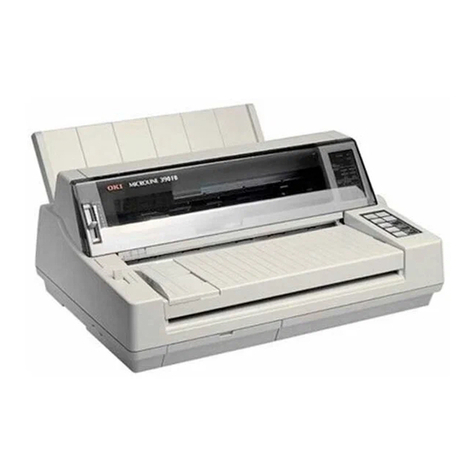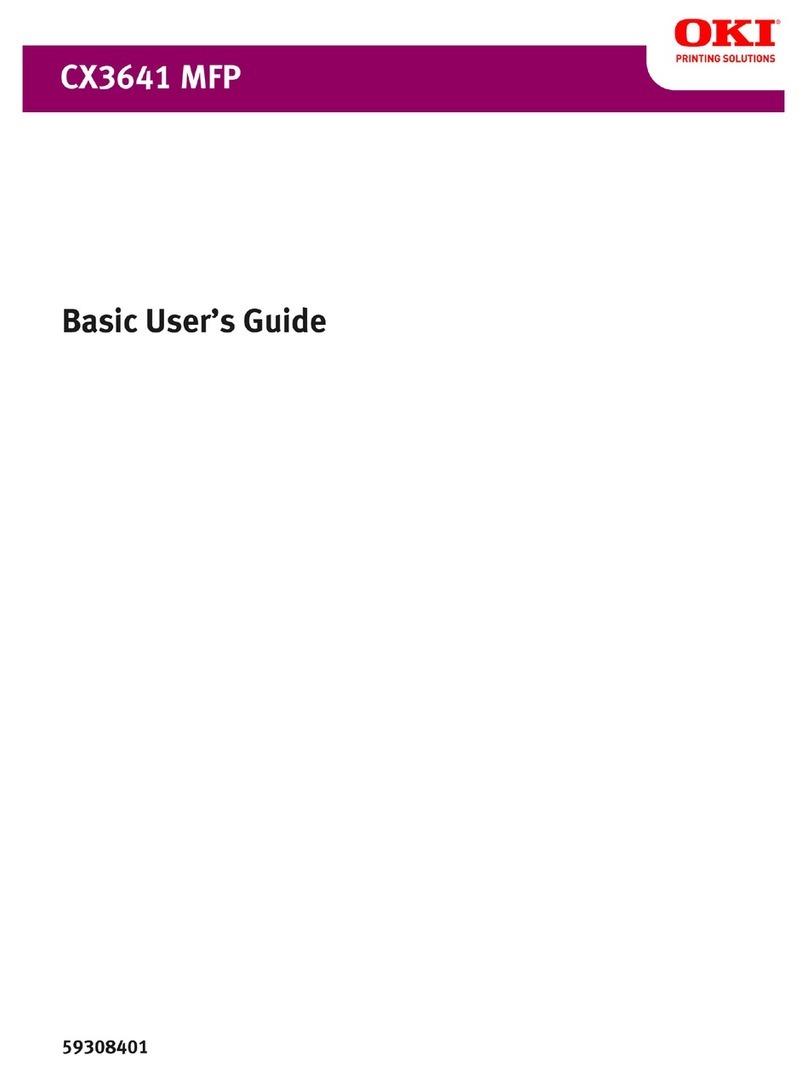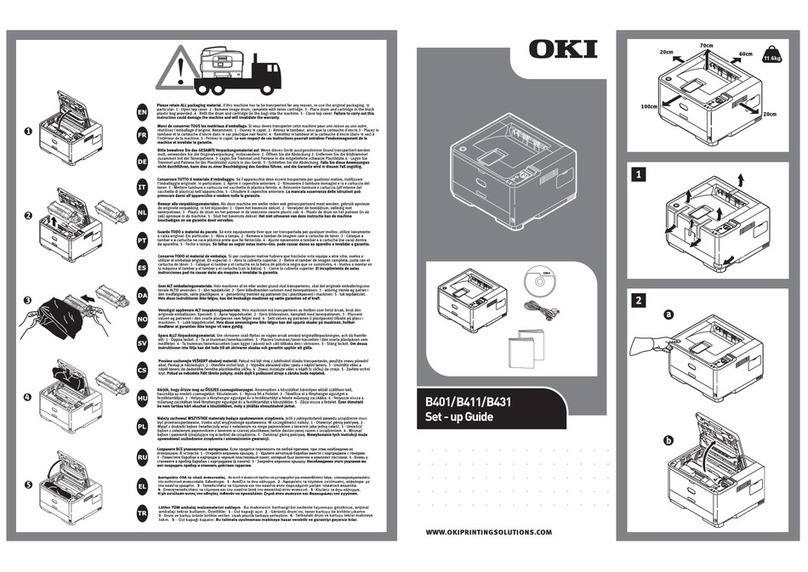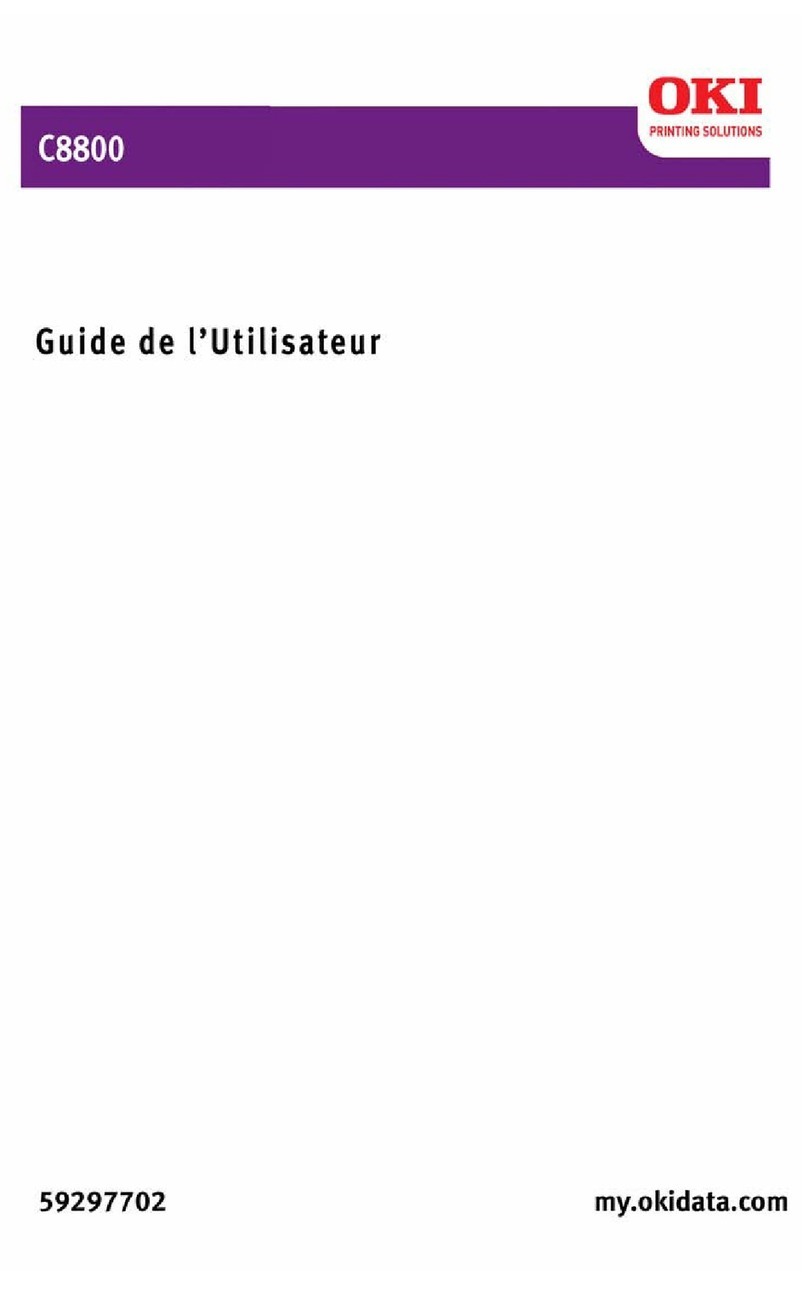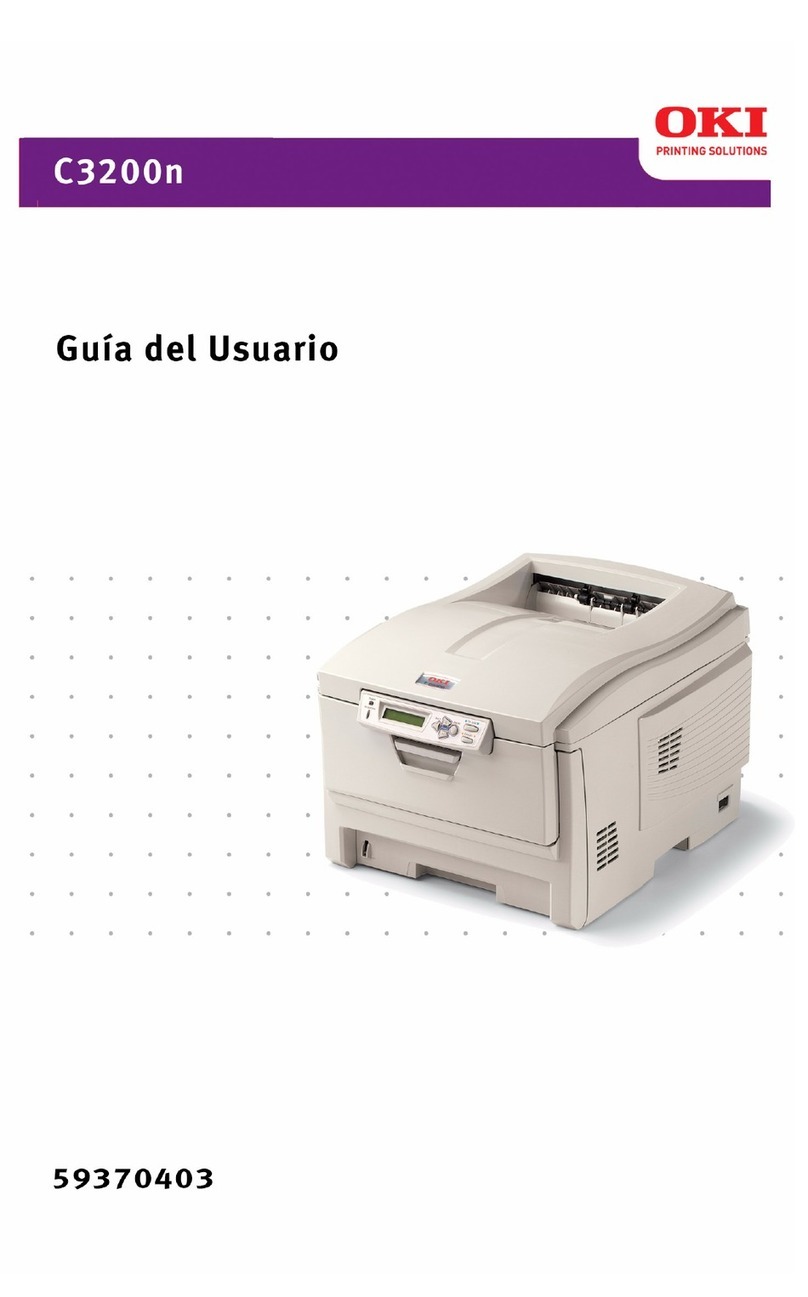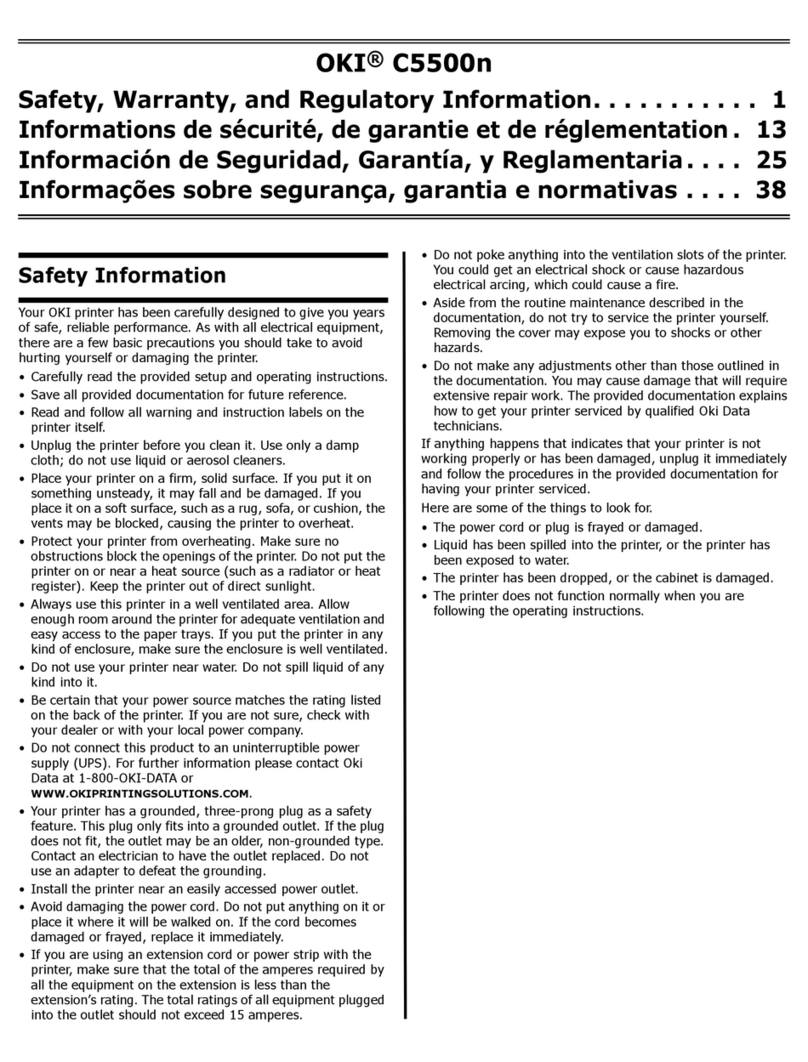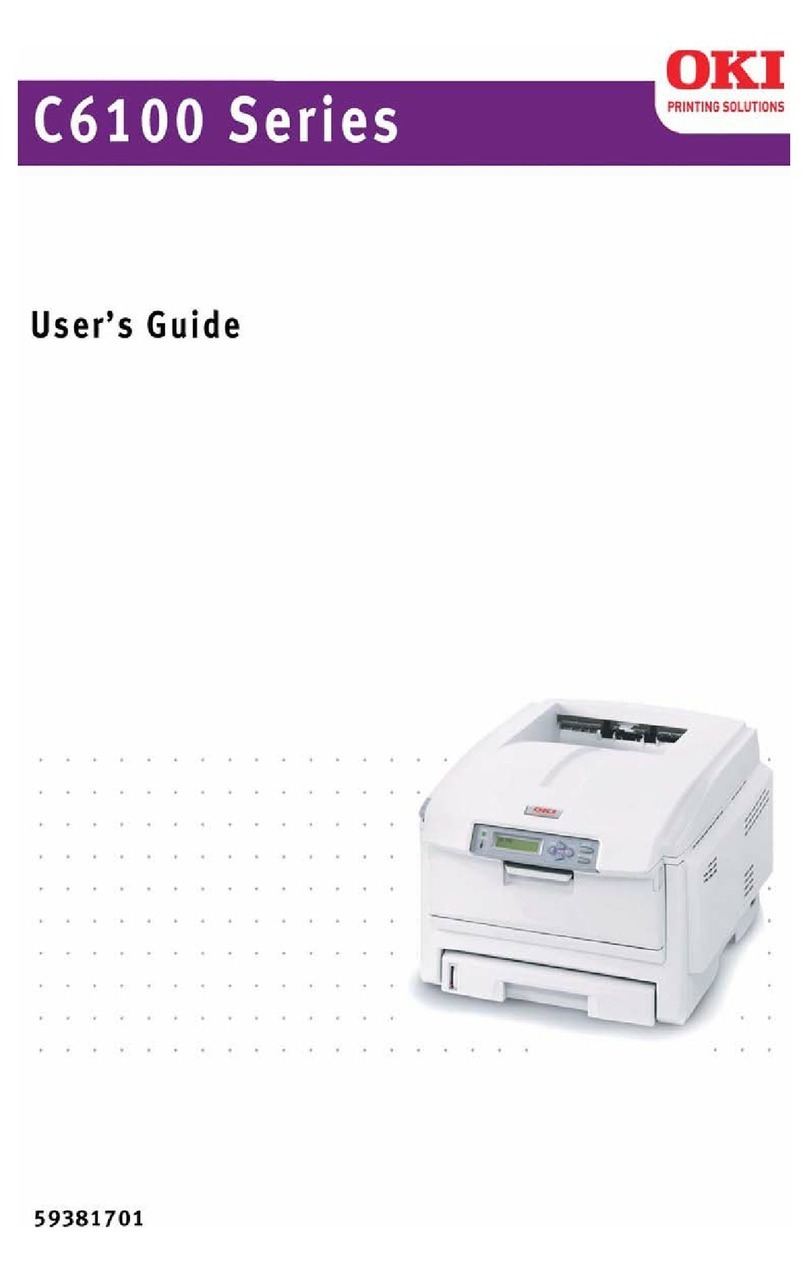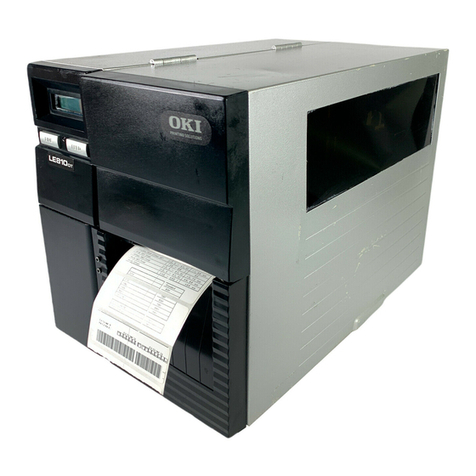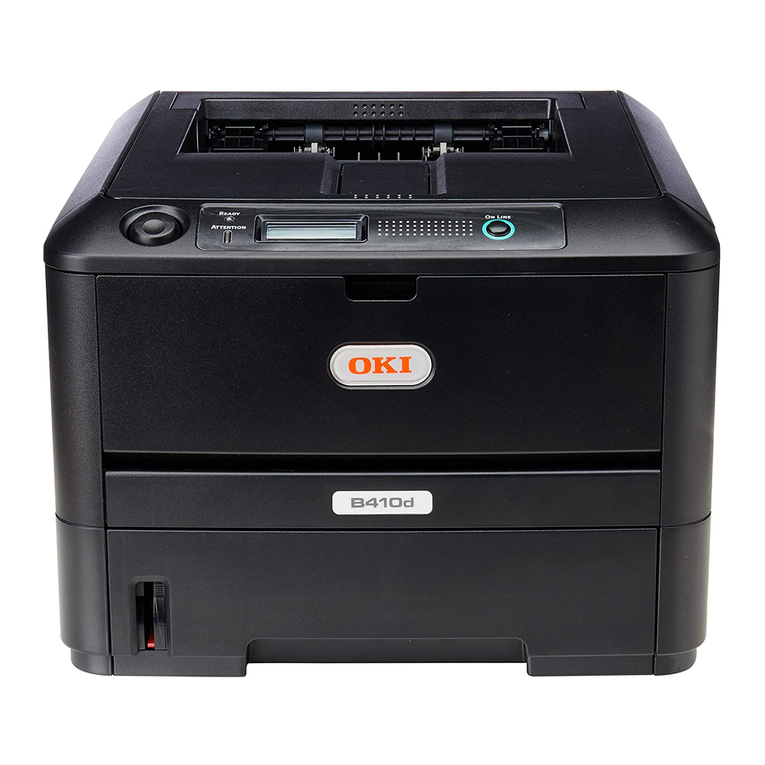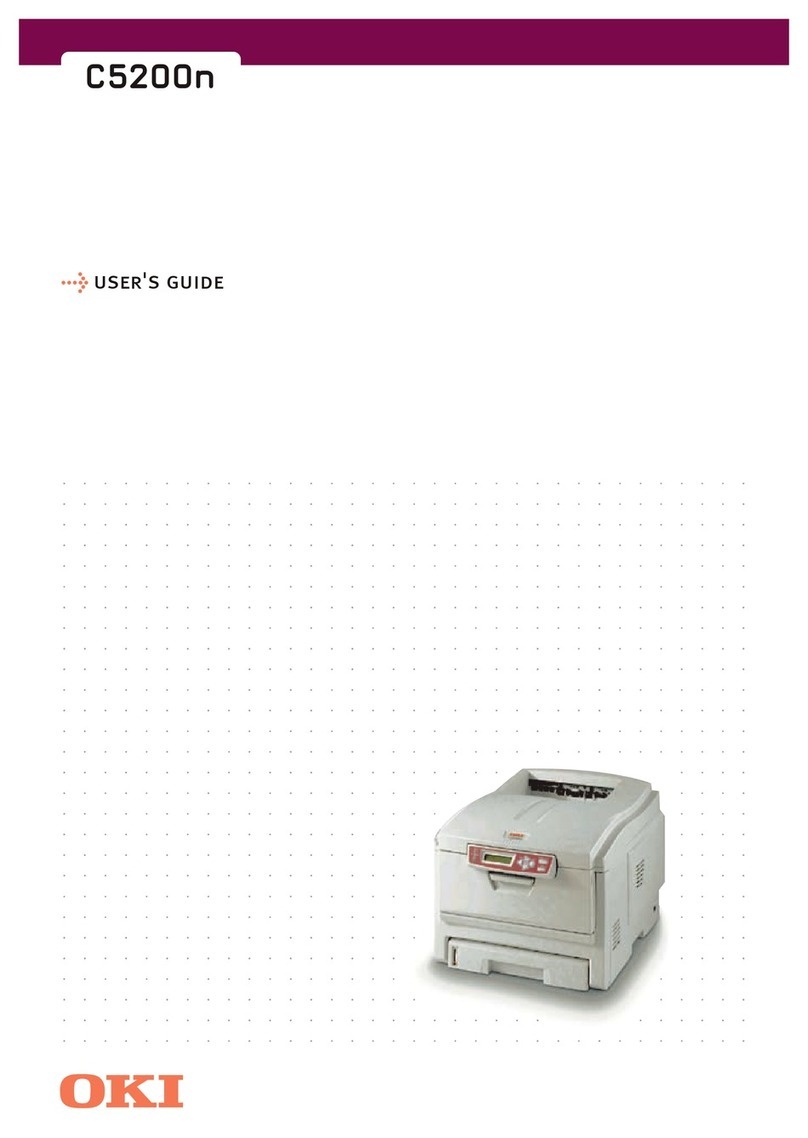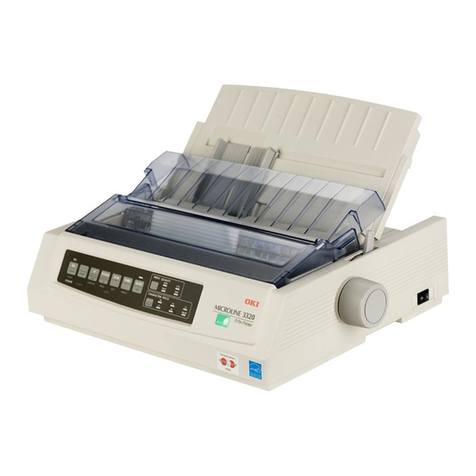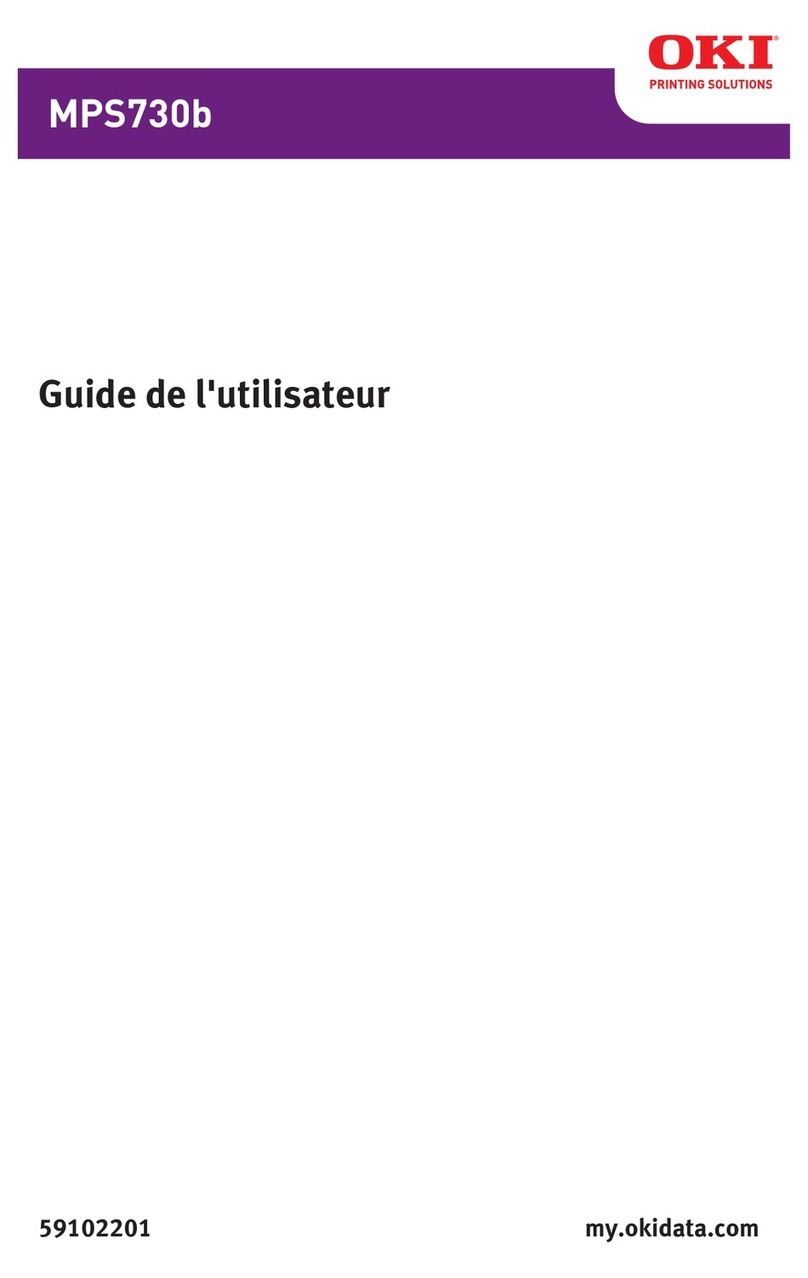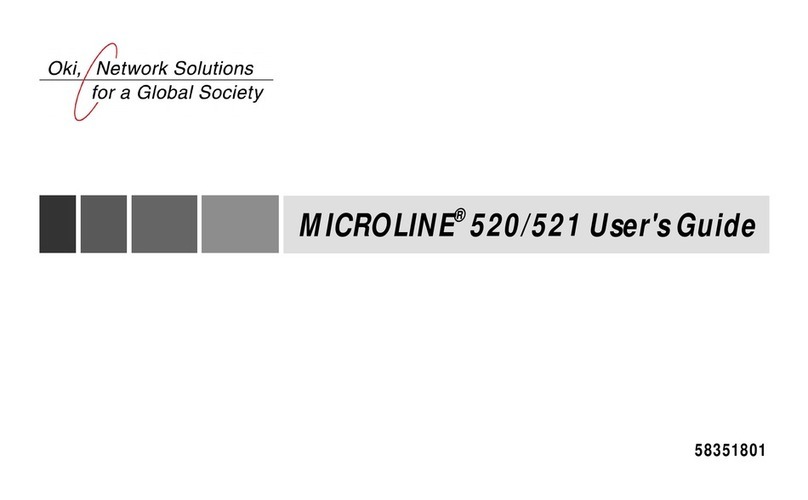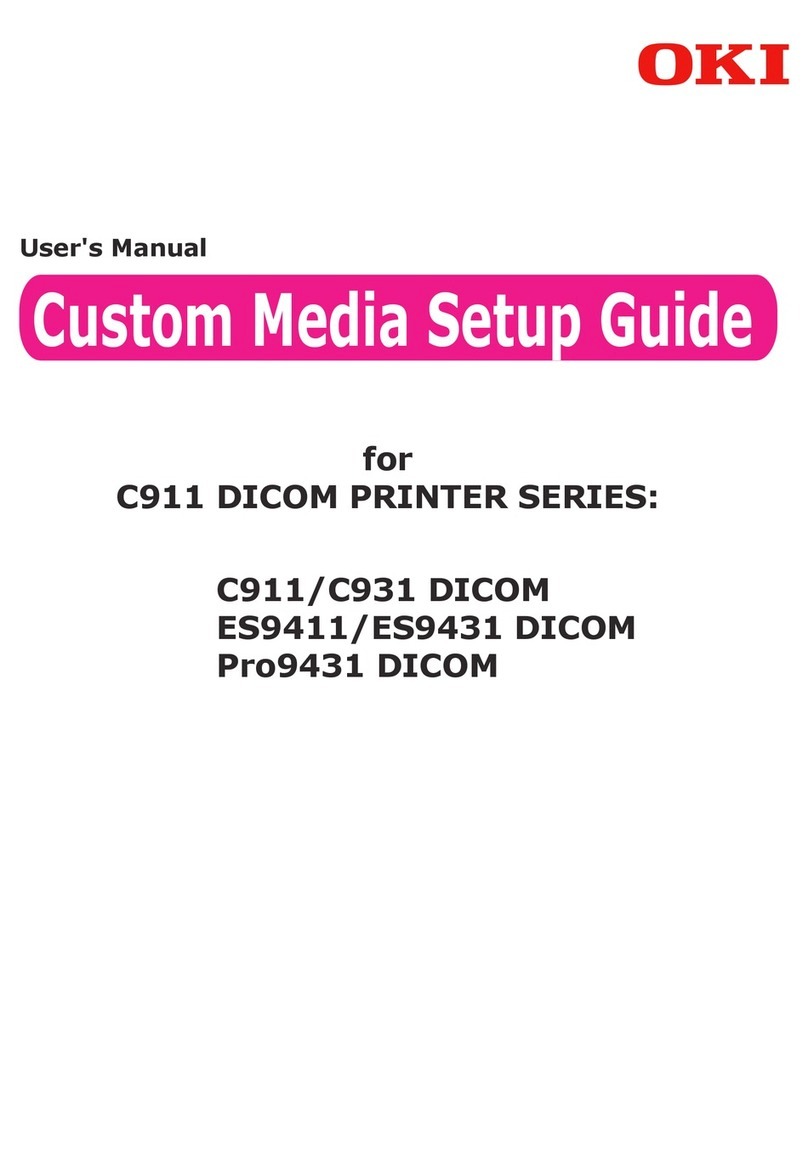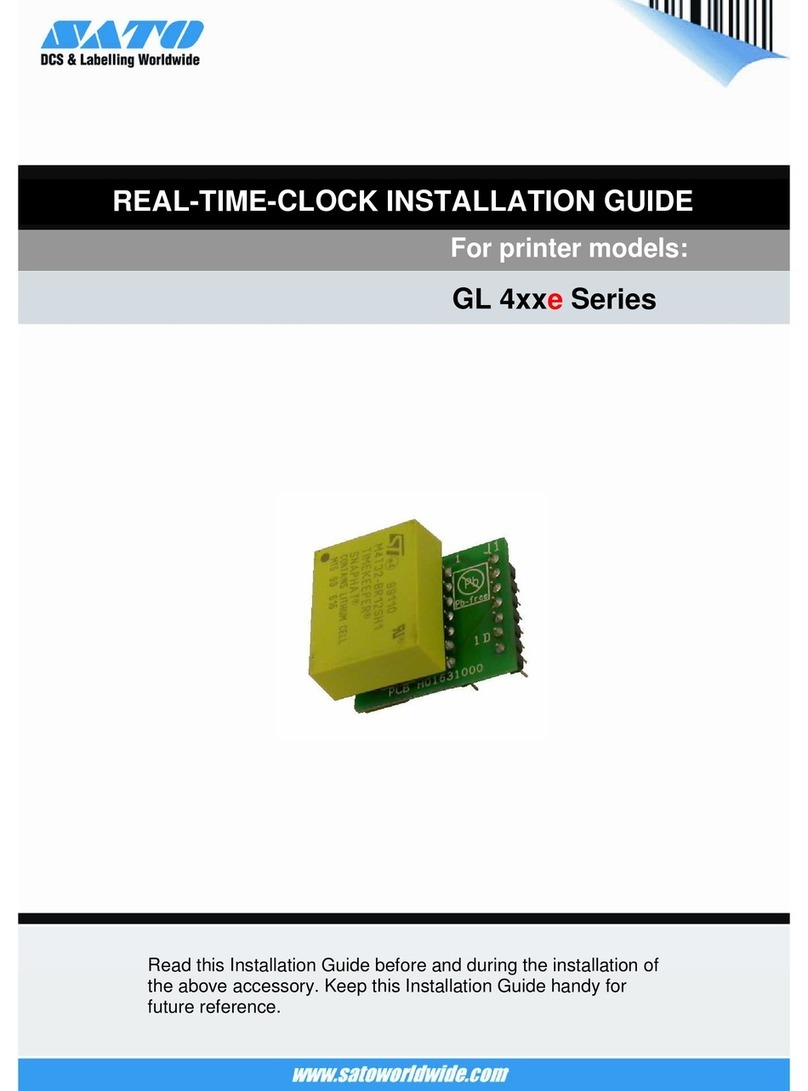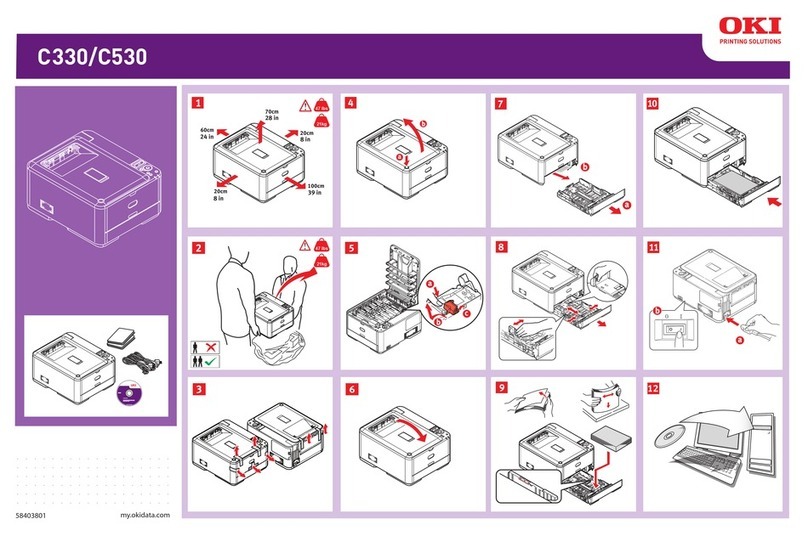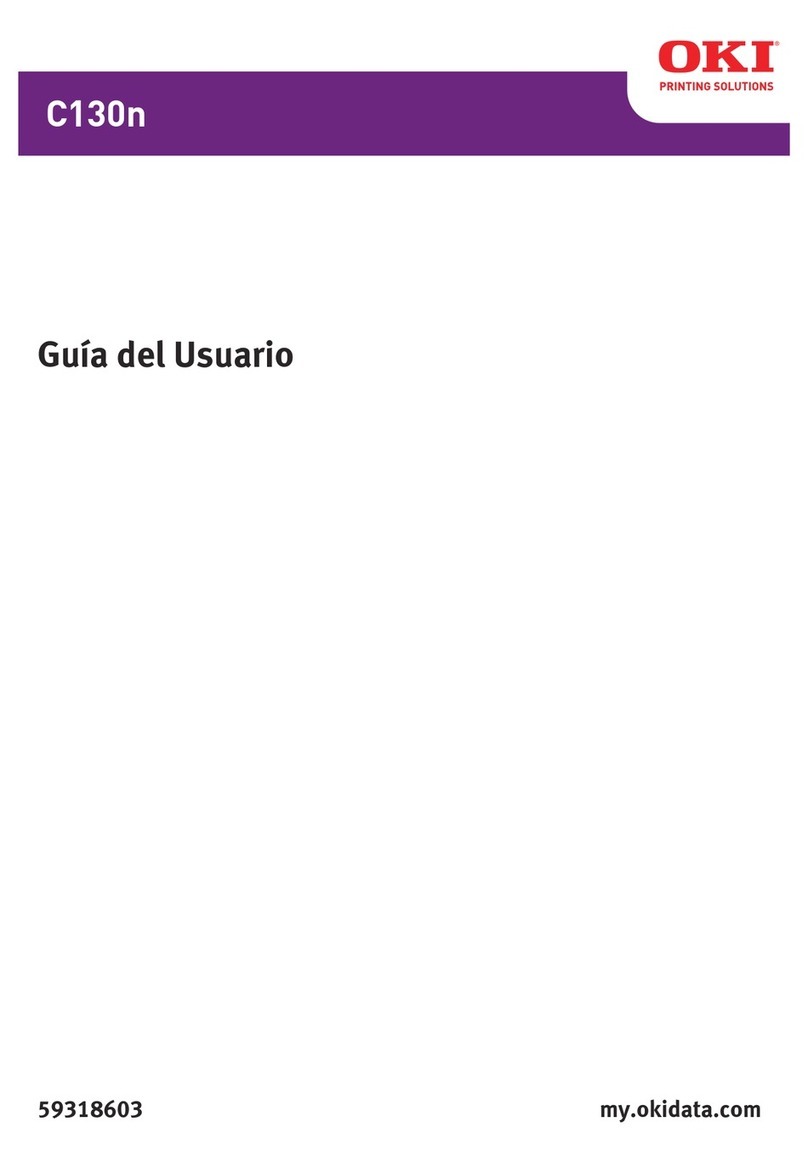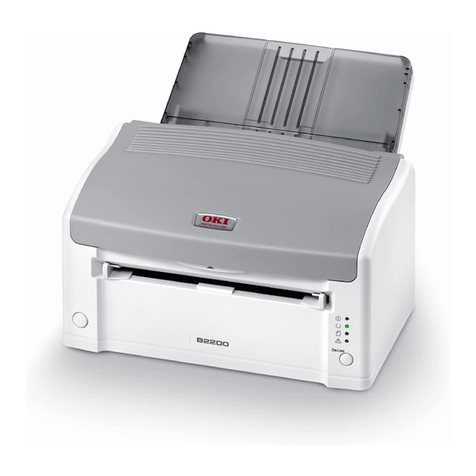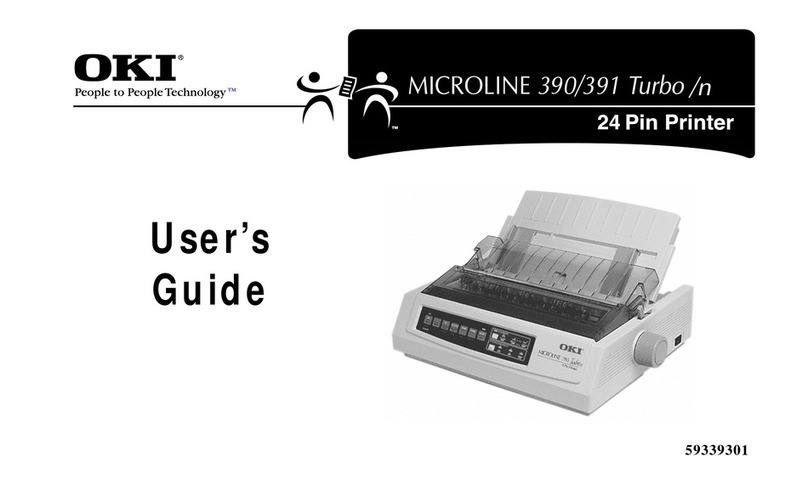
41057610TH Rev. 1 3 /
CONTENTS
1.SPECIFICATIONS............................................................................................6
1.1 Basic System Configuration.............................................................................................6
1.2 Printer Specifications.......................................................................................................7
1.3 Option Specifications.......................................................................................................8
1.4 Basic Specifications........................................................................................................9
2.OPERATION...................................................................................................12
2.1 Main Control Board (PCE PCB)....................................................................................13
2.2 Engine Control Board (PX4 PCB)..................................................................................16
2.3 Power/Units....................................................................................................................17
2.4 Mechanical Processes...................................................................................................18
2.4.1 Electrophotographic processing mechanism....................................................19
2.4.2 Paper running process.....................................................................................25
2.5 Sensors..........................................................................................................................34
2.5.1 Paper related sensors......................................................................................34
2.5.2 Other sensors...................................................................................................35
2.6 Correction of Color Deviation.........................................................................................36
2.7 Transfer Control according to Environmental Changes
(Room Temperatures and Relative Humidities).............................................................36
2.8 Form Jam Detection.......................................................................................................37
2.9 Cover Opening...............................................................................................................37
2.10Toner Low Detection......................................................................................................38
2.11Page Size Detection......................................................................................................39
2.12Power-on Processing.....................................................................................................40
2.12.1Self-diagnostic test...........................................................................................40
3.PARTS REPLACEMENT................................................................................41
3.1 Precautions for Parts Replacement...............................................................................41
3.2 Parts Layout...................................................................................................................43
3.3 How to Change Parts.....................................................................................................47
3.3.1 Cover Assy Rear..............................................................................................48
3.3.2 Motor-Fan (80-25)............................................................................................49
3.3.3 Paper Eject Assy..............................................................................................50
3.3.4 Cover Assy Stacker, Guide Eject FD Assy.......................................................51
3.3.5 Frame Assy Upper............................................................................................52
3.3.6 Plate Support Assy...........................................................................................53
3.3.7 Limiter 2way (L), (R) / Plate Guide (L) , (R)......................................................54
3.3.8 Cover55
3.3.9 PCB Assy : PCE...............................................................................................56
3.3.10Motor Fan (CU).................................................................................................57
3.3.11PXF PCB/PX4 PCB..........................................................................................58
3.3.12Gear Heat Assy................................................................................................59
3.3.13Main Motor (A), (B) Assy..................................................................................60
3.3.14Gear One-way (Z30).........................................................................................61
3.3.15Motor Assy BT..................................................................................................62
3.3.16Power Supply Unit, Holder Inlet, Sheet Insulation............................................63
3.3.17Sensor Assy Box Toner....................................................................................64
3.3.18Square-shaped Connector...............................................................................65
3.3.19Hopping Motor..................................................................................................66
3.3.20Gear One-way..................................................................................................67
3.3.21Feeder Unit Front.............................................................................................68
3.3.22Manual Feed Hopper Assy...............................................................................69
3.3.23Guide Paper Input Assy....................................................................................70
3.3.24Two Lever Input Sensors, Lever 2nd Feed Sensor..........................................71
3.3.25Roller Registration, Roller Assy Hopping.........................................................72
